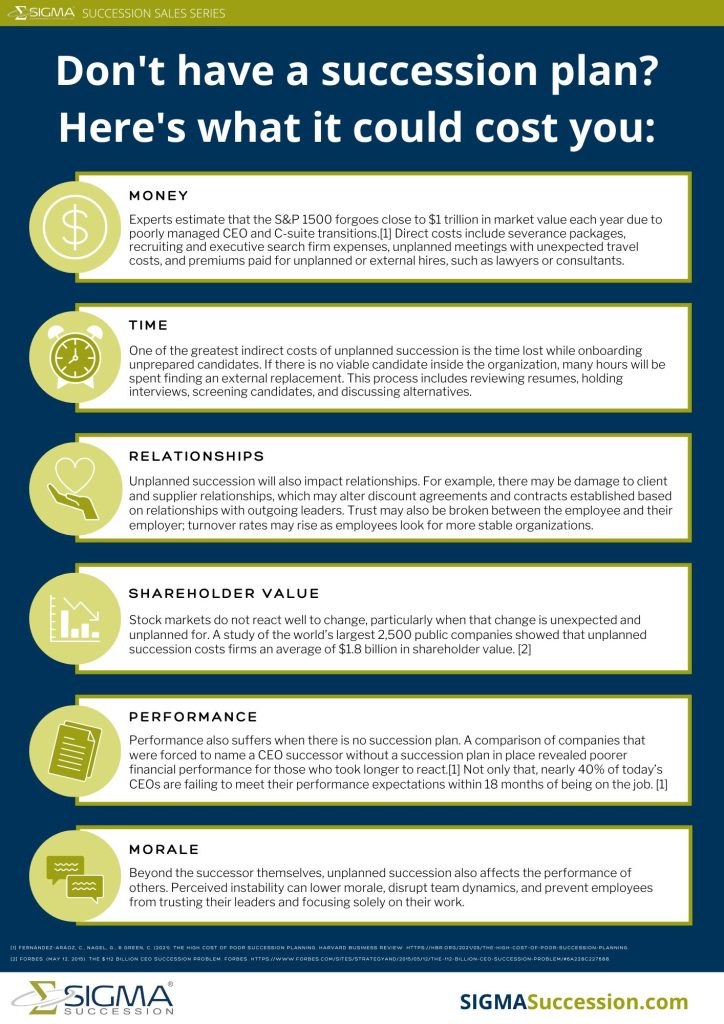What Is Succession Planning?
Succession, Succession Planning, and Succession Management are all terms that get used frequently. But what is succession planning and why is it important to your organization?
Broadly, succession planning can be defined as “a process for identifying and developing new leaders who can replace old leaders when they leave”[1]. When done successfully, succession planning helps to identify those employees who are capable of assuming leadership roles and developing them so they’re ready to move into these positions when they become available. Further, a good succession plan prepares for the roles previously held by new leaders, and helps younger or newer employees move through the ranks of the organization.
Watch our ‘What Is Succession Planning Video’ below for more information on understanding the necessity for succession planning within your organization.
Succession, succession planning, and succession management are all terms that get used often, but you might be wondering what exactly they mean and why it’s important for your organization. Broadly speaking, succession planning is a process for identifying and developing new leaders within your organization so that they’re ready to take over when your current leaders leave.
When succession planning is done well employees will be able to move into new positions when they become available, allowing them to move through the ranks of your organization. So what succession planning allows you to do is have the right people, in the right place, at the right time. Having an effective succession plan in place will allow you to fill open positions from within with confidence and without delay.
This means that talented executives are more likely to stay with your company because they can see that the organization is committed to supporting the development of its people. So what succession planning does is helps ensure the business continuity by retaining valuable institutional knowledge. If you’re interested in learning how to bring succession planning to your own organization, give us a call and we’ll be happy to help.
Succession Planning Defined
“Succession Planning is described as having the right people in the right place at the right time.” [2]
When organizations have an effective succession plan in place, they are able to fill open positions from within, with confidence, and without delay[3]. As a result, talented executives are more likely to stay because the organization demonstrates that it is committed to supporting the development of their people and provides employees with the resources they need to grow into new roles[4]. Succession planning means that future leaders know which advancement opportunities are available, and they are driven to achieve greater seniority by working towards organizational rather than individual objectives[5].
Succession planning also helps businesses retain valuable institutional knowledge, ensuring business continuity. This is a dynamic process – as organizational needs change, the succession process must evolve as well. It is important to consider how employee aspirations and talents can be aligned with the internal and external environment of the organization[4].
The Cost of Not Having a Plan
Not sure whether succession planning is worth the cost? Take a look at the summary below to see what the cost of unplanned succession may be. Download the infographic and use this data to get your CEO and other senior leaders on board to invest in the succession planning process.

Download Infographic: The Cost of Not Having a Succession Plan
.
Develop your Succession Plan with SIGMA
SIGMA’s Succession Planning Launch Series can help. This series offers a simple way for you to build a robust process to ensure your organization’s leadership is positioned for success and prepared for the unknown.To get started, complete our quick Succession Planning Checklist to measure the maturity level of your succession process and discover which areas within your plan need to be improved. Is your company ready if someone unexpectedly leaves or retires? SIGMA has developed a way to help your company get ready. Contact us and get started today.
.
[1] Succession planning. Retrieved from https://en.wikipedia.org/wiki/Succession_planning on January 30th, 2019.
[2] Atwood, C. (2007). Succession planning basics. Alexandria, VA: ASTD Press.
[3] Mahler, W. (1986). Succession planning handbook for the chief executive. Midland Park, NJ: Mahler Publishing Co.
[4] Clutterbuck, D., & Goldsmith, M. (2012). The talent wave: Why succession planning fails and what to do about it. Philadelphia, PA: Kogan Page Limited.
[5] Carter, N.H. (1986). Guaranteeing management’s future through succession planning. Journal of Information Systems Management, 3, 13-24.
.
